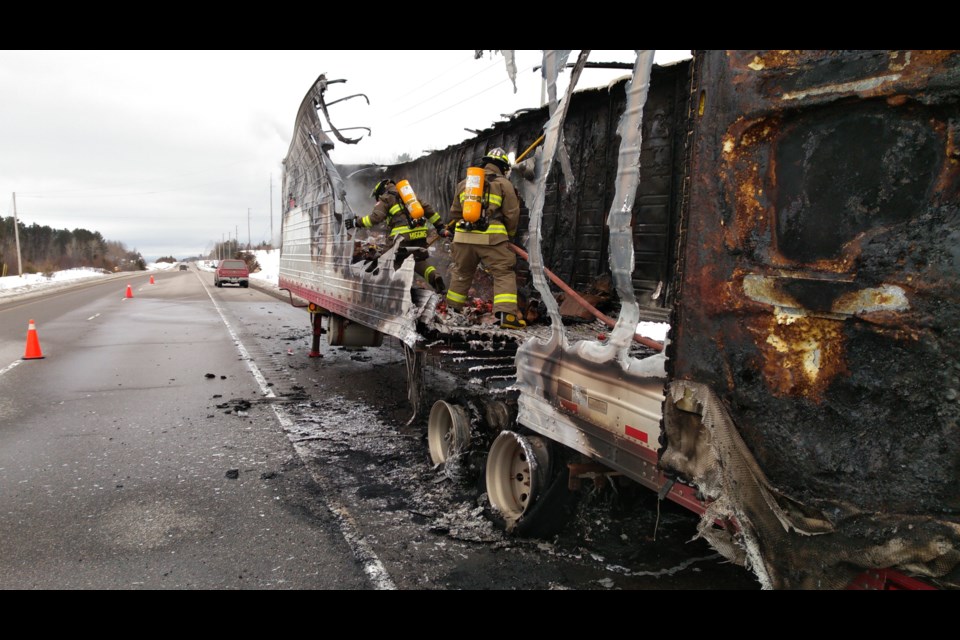We have more details now, but no definite cause for that transport fire that closed Highway 11 South Tuesday morning.
The Callander Fire Department responded and Chief Todd Daley says the fire originally closed both lanes, but a single lane was opened after the blaze was under control. between 18th Concession and Watson Road approximately 1 km north of Hill Siding Road.
OPP say the trailer was loaded with food and no injuries were reported.
"The vehicle operator separated the tractor from the 53’ refrigeration trailer," explains Daley. "The tractor was not involved in the fire and both vehicles, tractor and trailer, were on the shoulder of the highway."
Callander firefighters arrived on scene at 8:40 a.m. and the fire was under control in 20 minutes. The highway was closed for approximately 30 minutes and shortly after that, one lane was opened.
"The fire was declared out at 11:20 a.m. and we cleared the scene at 11:50," added Daley.
The trailer was a totalled and Daley estimates the loss at $100,000.
"Due to the extent of the damage, I can’t be specific about the cause, but the ignition area was at the trailer wheels. The reason I can’t be specific is because I don’t know if there was a fluid leak from the wheels, seized brake drum, seized wheel bearing, etc., but the walls of the trailer were completely melted above the trailer wheels and there were no other sources of combustion, therefore, we can conclude that the wheels were the source of ignition."
No charges were laid.
The incident raised a couple of concerns for Daley.
He expressed alarm at how fast cars were passing the scene
"The amount of people driving incredibly fast through the scene was just crazy," he told BayToday.
"People are driving too fast through an emergency scene. Drivers need to slow down, 60 to 80 km/h is not slow enough, and maintain a slow speed until they have completely cleared the entire scene. Between police and fire the length of the scene was approximately 300 metres."
The Chief is also concerned about drivers pulling out their cell phones and taking videos or pictures while they are operating their vehicle.
"They are not paying attention to their driving. Drivers speeding and/or not remaining attentive to their driving through emergency scenes are putting emergency services workers at risk. We try to get traffic moving as quickly as possible so that drivers are not inconvenienced more than necessary, however, we do need space to work."
Daley says the safest thing to do would be to shut the highway down until firefighters completed their work – in this case, drivers would have been delayed three hours.
"A highway is not shut down unless absolutely necessary, however, if emergency workers are going to work next to a live lane of traffic, so that traffic can continue to flow, then drivers must do their part – drive slowly until they have cleared the scene and pay attention to their driving. Don’t pick up the phone and don’t “rubberneck.
"Apparently, getting to their destination 10 seconds sooner is more important than the lives of police officers, paramedics, and firefighters."



